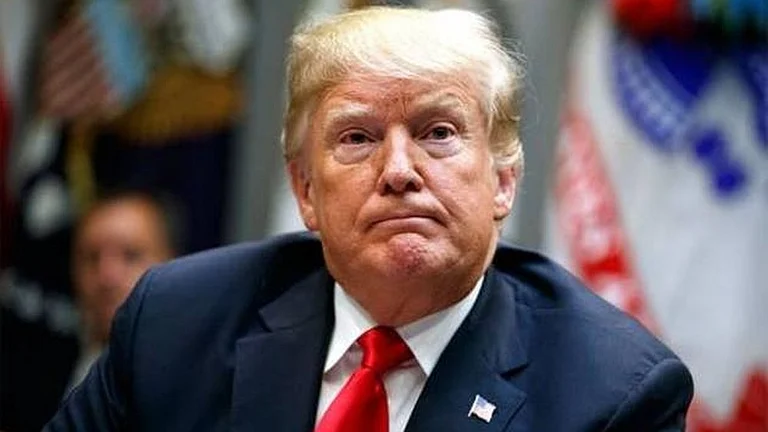Trump extends China tariff suspension by 90 days via executive order.
Extension delays potential US-China trade clash, maintains current agreement terms.
April tariff war saw duties peak at 145% on Chinese goods.
Trump urges China to quadruple US soybean orders to cut deficit.
Day Before Deadline, Trump Extends Tariff Suspension on China For Another 90 Days
This announcement further delays the expected showdown between the largest economies of the world.
US President Donald Trump extended the tariff suspension on China for another 90 days. Signing an executive order on Tuesday, the American President said that all the other elements in the agreement between the two countries will remain the same.
Taking to his social media platform, Truth Social, Trump said, “I have just signed an Executive Order that will extend the Tariff Suspension on China for another 90 days. All other elements of the Agreement will remain the same. Thank you for your attention to this matter!"
According to the Associated Press, this announcement further delays the expected showdown between the largest economies of the world.
The tariff agreement between the US and China was the expected outcome following the latest talks between the officials of the two countries, that was held in July, CNBC reported. Previously, the deadline for China tariffs was set to expire at 12.01 am on Tuesday. If that deadline had expired, the US could have increased taxes on Chinese imports back to where they stood in April, when the tariff war between the two largest economies was at its peak.
The tariff salvo started with in April 2 when Trump announced sweeping tariffs on more than 100 countries, including India and China. However, he later paused those tariffs for 90 days for almost every country. China was excluded from this pause and thereby they retaliated by imposing tariffs on US exports to China.
In April, the US tariffs on Chinese goods hit as high as 145 per cent, whereas China's tariffs on US goods were at 125 per cent, a move which rattled the global stock markets as the fear of a full-blown tariff was at its peak.
After escalating tariffs on exports, both the US and China agreed to pause their tariffs after the negotiators held the first round of talks in Geneva. The US eventually agreed to bring down the tariffs back to 30 per cent and China on the other hand, dropped its duties to 10 per cent.
On August 10, Trump wanted China to quickly quadruple” its orders of US soybeans. In a post on Truth Social, he wrote, “This is also a way of substantially reducing China’s Trade Deficit with the USA."

